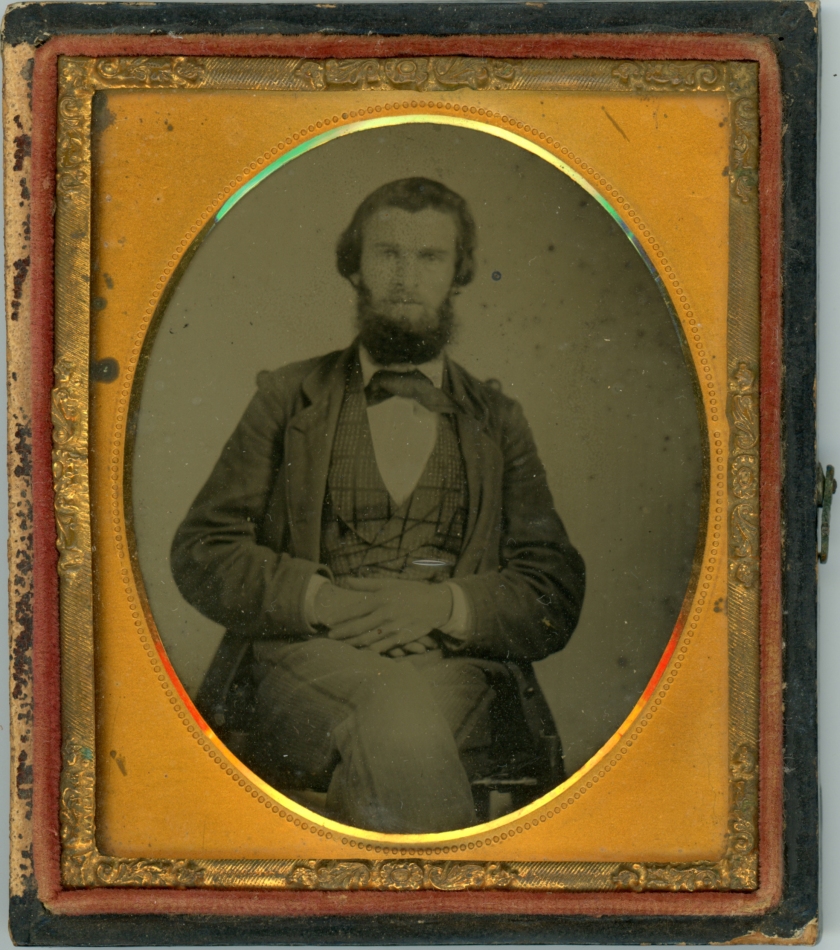
The oldest photo I own. How old is he in this picture?


Robert H. Dickson Jr and Susan Louise Bailey Dickson
Easter, 1939, Fort Smith, Arkansas
Sometimes, I have to think for a while until I get a good idea for this 52 Ancestors in 52 Weeks blog – which ancestor I would like to talk about for the theme of the week. Sometimes, as soon as I see the topic, I just know who I will write about. (You see, I am trying not to reuse the same set of ancestors that I already know about. I want to find out more about others each week.)
And then, there are times when, regardless of what you had planned on writing, someone else forces their way to the front of the line and demands to be written about. This week is that week.
Today is Martin Luther King, Jr. day. It’s a day off work for many, but since I have early morning meetings in Washington, DC, I had to travel. I was looking over my Facebook feed on the plane and saw that a cousin had posted a quote by MLK. Since his father was very active politically in the 1960s, I asked whether or not he had ever met Dr. Martin Luther King, Jr. Then it struck me that I needed to write about him this week as the ancestor I would like to meet.
Thomas Dunn Finney, Jr. was born 20 Jun 1925 in Idabel, McCurtain County, Oklahoma to Thomas Dunn Finney and Bettie Higgs Finney. Bettie’s family had come to Idabel in 1911. I am not sure when Tom, Sr.’s family first arrived in the area. It must have been after Aunt Bettie’s family, since his WWI draft card was filed while he still lived in Tennessee in1918.
Tom Jr. was Tom Sr. and Bettie’s only child. In fact, among Bettie’s siblings, there were not a lot of children. Her sister, Lida, had a single son in 1926. Her brother, Jere Will, had just one son in 1927. And her sister Mary had just two daughters, considerably later than the three boys. I have a number of pictures of the boys together as little guys, playing around their grandmother’s home in Idabel.





Tom Finney, Sr. was a prominent trial attorney in Oklahoma. He served for a period in the state legislature, as well. Tom Finney, Jr. served as an officer in the U.S. Navy toward the end of World War II. After that, he attended the University of Oklahoma and went to work as an attorney in his father’s firm.
From 1952 to 1955, Tom served with the Central Intelligence Agency in Copenhagen, Denmark. In 1957, he moved to Washington, DC as the administrative assistant to Senator A.S. Mike Monroney (D. Oklahoma). In 1963, he joined the law firm of Clifford, Glass, McIlwain, & Finney in Washington. He practiced law as a partner there until near his death in 1978.
During his time in Washington, Tom was both a witness to and an influencer of history. He was a person that many household names of American politics went to for counsel and advice – Presidents John F. Kennedy & Lyndon B. Johnson, Senators Adalai Stevenson, Edmund Muskie, Eugene McCarthy are only a few. He counted among his circle of contacts people like Walter Mondale (future Vice President), his law partner Clark Clifford (Secretary of Defense), and Eleanor Roosevelt.
(I was going to put an image here, but it’s a stock image from ShutterStock. So, if you want to see a picture of Tom Finney, Jr and Curtis Gans working on Eugene McCarthy’s presidential campaign, click here. Tom’s son also has a really nice photo of Tom with President Kennedy and Vice President Johnson.)
Tom was very involved in a number of presidential campaigns, serving in different capacities. If you search for him at the JFK Library, you will find many of the big names of the day talking about how he was very influential behind the scenes. You’ll even find some sort of dirty tricks that Walter Mondale played on him to defeat his candidate in one Democratic convention.
Tom Finney was an advisor to President Kennedy for the Trade Expansion Act, for Foreign Policy and Foreign Trade Policy. In 1964, President Johnson asked Tom to go to Mississippi to investigate the murders of the civil Rights workers, Schwerner, Goodman and Chaney and to monitor the registration of black voters. He was one of the key people to work out the agreement that seated the Mississippi delegation to the 1964 Democratic Convention.
This is all a pretty amazing resume for someone that you have probably never heard of! When he died in February 1978, Senator Edmund Muskie provided a wonderful tribute to Tom Finney for the Congressional Record. It included tributes from Senator Adali E. Stevenson, Clark Clifford, and W. Devier Pierson. This is preserved as a part of Senator Muskie’s papers at Bates College. Obituaries for Tom appeared in both the New York Times and the Washington Post that recounted his career.
And just to prove that Tom made it to the big leagues, I even found him mentioned on some sites discussing conspiracy theories on the assassination of John F. Kennedy! (I’m not linking to them so as not to encourage that kind of thing!)
Tom Finney, Jr. married Sally Van Horn and raised a family. I knew Tom’s parents. Well, I knew his mom, my Aunt Bettie whom you met in previous posts. Uncle Tom Finney, Sr. died when I was not quite five years old, so my memory of him is pretty dim. I know Tom and Sally’s children, his two living daughters and his son. I get the impression that they carry on his deep concern about people and their interest in politics as a way to help people and help our common situation.
But, I never met Tom Finney. I would love to hear what he would have to say about how our nation has progressed since the 1970s. I would love to hear what he thinks about the current state of deadlock in our nation and around the world. I would love to talk to him his work for civil rights and about the changes in attitude from those his grandfather expressed in his newspaper, or those of his great-grandfather who owned slaves.
And I wonder if his reputation of being a person who could find a way for people who were not only at odds, but at each others’ throats, to find a way to move forward. I wonder if we would be in the same place now that we find, ourselves if death had not claimed him far too soon.
So, Susie, Deedie, and Todd, that’s why your dad is the ancestor I would like to meet and get to know.
In these days where so many people have made-up names, I wonder what really constitutes an unusual name anymore. We live in a really ethnically mixed world and deal with folks with names that don’t necessarily roll off our tongues. I know, growing up in Tennessee, I never expected to meet the Polish and Slavic names I found when we moved to Pittsburgh. Now, I work with people from around the world and encounter lots of “unusual” names.
I talked before about one of the more unusual names in my line – Otway Lycipious Bailey and Zenas Ignatious Tennison. Never have quite figured out where those came from.
In my family, you can find all of those good Old Testament and New Testament names. Along with Aaron, Abel, and Abraham, you find Ebenezer, Eunice, Hephzibah, Vashti, and Micajah. Sometimes you have to wonder whether the parents actually read the Scripture, or whether they just figured it was a good Bible name.
There are several folks with Puritan-style virtue names – Charity, Experience, Patience, Constant, Honore, Hope, and Mercy for some. These seem to have gotten a start in the Great Migration, but they carry on for generations.
There are folks named after famous people – George Washington, Thomas Jefferson, and even Marcus D. Lafayette.(Marquis de Lafayette – for real! And they have no name to go with the D. and they were called Marcus!) There’s a Fernando Cortes (in Arkansas) and a Christopher Columbus (called Lum).
I have a number of folks named after places – Tennessee, Texanna, Virginia, Carolina (and even Virginia Carolina!). There’s an Augustine Florida and an Augusta Carolina, a Georgia Augusta, and a Savannah Georgia. Seems like the women are more frequently named after places than the men in my family.
One man in my family had not so much an unusual name as an unusual coincidence of names. Benjamin Franklin Pierce Hudson was born 22 Dec 1854 in Fulton County, Georgia to Wesley Hudson and Elizabeth Landers. He was the 10th of their 13 children. I’ve spent years working on trying to find the families of Wesley and Betsy with no real luck. And among their children, I’ve really spent most of my time on their son John Wesley Hudson, my great-great-grandfather, who moved from Georgia to Arkansas after the Civil War.
I thought that maybe there was another Benjamin Franklin Pierce for whom Dock Hudson was named. I suspect that if there were, he was a family friend. He had brother named Silas Norton Hudson, named I suppose for the neighbor and associate Silas Norton who lived nearby. But, I’ve not found one yet. I guess I might look a little harder. Maybe he was named for President Franklin Pierce, who became president in 1853, just a year before B.F.P. Hudson was born.
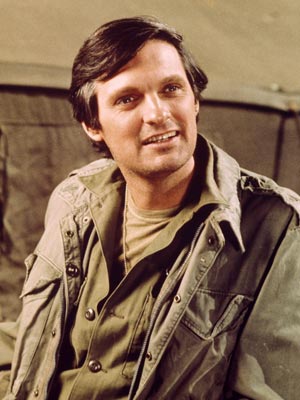
Benjamin Franklin Pierce Hudson often went by the nickname “Dock”. That’s pretty coincidental, since his namesake, years later, was a famous doctor of sorts. Do you remember watching M.A.S.H. during the 1970’s? What was Hawkeye’s real name? Dr. Benjamin Franklin Pierce! I thought this was a funny coincidence as I was reviewing my family groups.
Dock Hudson, like I said, was born in 1854 in what would now be called Midtown Atlanta. Wesley and Betsy owned over 350 acres there before the Civil War. When the war broke out, they moved west to Dallas in Paulding County and lived along Pumpkinvine Creek. If they were trying to escape the war, they didn’t do very well. Pumpkinvine Creek was the scene of some major fighting during the battle for Atlanta in 1864.
Dock married Salina Laura Adair on 11 Dec 1873 in Paulding County, Georgia. She was the daughter of William Levi Adair and Adaline Gann. For any of my Arkansas Hudson family, you will recognize the Gann name. The Hudsons and the Ganns were thick even back in Georgia. John Wesley Hudson and John William Gann were best of friends in Georgia and in Arkansas. The two families have cemeteries less than a quarter mile from each other, on Gann Cemetery Rd and Lane Cemetery Rd, near the Pumpkinvine Baptist Church outside Dallas, Georgia.
Dock was a prominent businessman in Dallas. He as elected to the Ordinary Court in 1896. The 1910 Census shows him as bookkeeper for the court. He died in 1925 and Laura died in 1939. Both of them are buried, along with several of their children, in the Dallas City Cemetery, right on the main avenue as you pull into the cemetery. A place of prominence.
He and Laura had seven children, six of whom lived to adulthood. The last of his children died in 1994. I wonder if Ethel Hudson saw the coincidence that the main character in one of the most popular television shows of the 1970s shared a name with her father, “Doc” Benjamin Franklin Pierce Hudson.
It’s sort of ironic that the theme for this week is Challenge. My biggest challenge lately is finding time to sit down and think about this blog. I spent this week in Toronto. I have not been home for a whole week since Thanksgiving and won’t be home for more than a weekend at least until mid-February. I guess for all of us, time is always the biggest challenge.
Genealogically speaking, however, here’s one of my current challenges. I hope one of you can offer some ideas as to how I can break through this one.
Thomas Morton Higgs was born 11 Jul 1837 in Athens, Limestone County, Alabama, at least according to his granddaughter. On Christmas Day 1857, he married Mary J. Sartain in Athens. She was supposedly from Decatur, Morgan County, Alabama, born 27 Jun 1834.
I have been to the county Archives in both Limestone and Morgan counties and scoured all of their original records. I copied the marriage record straight from the book where it’s recorded. But that’s the first record I can find of either of them.


Now, normally, to find their families, I would think that the 1850 U.S. Census would be a good place to start. I cannot find any Higgs anywhere around, except for the well-documented family of a Charles Higgs, the local sheriff in Limestone County. Likewise, Sartains / Sartins / Certains / etc. are non-existent in northern Alabama. I do found one family that is a potential one for Mary – Alfred Sartain in Tuscaloosa. But, I cannot find any indication that they came north at all.
I’ve searched tax records, land records, estray records, court records, census records – everything that I could find in northern Alabama and the southern counties of Tennessee.
The marriage record says that they were married in the home of William H. Oglesby. Well, I can find him in Athens. Both he and his son, Fountain, are wagon makers. In 1850, William is 43 years old and Fountain is 19. Both are wagon makers. Now, Thomas ends up as a shoe and boot maker, so I don’t know that there is a connection there. I have not found any connection between the Oglesbys and either Higgs or Sartain.
By 1860, Mary and Thomas have moved to Iuka, Tishomingo County, Mississippi where they are found in the home of John Waldrup. Waldrup is also a shoe maker. My hypothesis is that they were in business together, either as partners or one as an apprentice to the other (Thomas to John since John appears the more established one.) But again, I can find no other sort of connection between the Waldrup family and either the Sartain or Higgs families. It seems like it’s just business.
When the Civil War broke out, like so many in the South, Thomas enlisted. He joined Co. E of the 17th Mississippi Infantry. He mustered in on 27 May 1861 at Corinth, Mississippi and signed on for a period of twelve months. He rose to the rank of 4th Sergeant before being discharged on 10 Jan 1862 due to his health. His early discharge was due to “general disability due to pneumonia and erysipelas”, though other records record “pneumonia, rheumatism, etc.”
My grandmother, Mary Higgs Wren, and her sister Lida Higgs Lee, both said that their grandfather had lost his sight during the war, but I have never found any record that would indicate this.
Thomas and Mary’s first child, John William “Will” Higgs, was born 7 April 1859 in Magnolia, Columbia County, Arkansas. How did that happen? Seems like perhaps they had moved to Arkansas and then came back to Mississippi when Thomas decided to enlist. If that were the case, then I would expect to find some sort of family connection in the area for Mary. But, I don’t. On the 1860, William, age 1, is clearly listed as born in Arkansas, as well as in all future records.
By the 1870 census, Thomas and Mary and their two sons (Will and Ira Thomas Higgs) were now in Hempstead County, Arkansas. They were living in the home of a physician, M.C. Boyce, and his wife Nancy. Dr. and Mrs. Boyce and four of their children were all from Alabama, but I’ve not found a connection there. It would appear that they were in Arkansas by 1857. In the home, there appear to be a number of children, as well as perhaps a previously married daughter and her children. The oldest child born in Arkansas was M.R, aged 13. All before that were from Alabama.
The family Bible records that Thomas died on 4 Feb 1875 in Hempstead County, Arkansas at the age of 37. Mary stayed in Hempstead County for a while, but eventually moved to Texarkana, Miller County, Arkansas, where she died 29 Oct 1887. According to my grandmother and my aunt, they were buried in the old cemetery in Washington, Hempstead County, Arkansas. They both remembered visiting the graves many years ago. When we tried to find them again, we found that the highway had been moved. They thought that the road perhaps had been relocated through the old section of the cemetery, where the stones may have been just stones. So the graves are also lost.
In the end the challenge is this: how can I find anything to connect Thomas and Mary to their families? I think that the Higgs folks probably came to northern Alabama from east Tennessee, above Knoxville. But, how would I connect Thomas as a child to one family or another. Likewise for Mary. I find a candidate family in the 1850 census, but I haven’t been able to find any connection between any of the people in that family and any Higgs folks.
There you have it. Is anyone up to this challenge and can help me find these mystery ancestors?
This post is a shameless plug. But, it’s the real deal. So, stick with me.
This past year, I wanted to find my grandfather, Robert H. Dickson, Jr’s World War II service record. I had sent away for his packet some years back and discovered that it was not available. You might remember there was a terrible fire in St. Louis in 1973 at the records center housing many of the personnel records from the Army and the Marines. I thought that was probably the end of that.
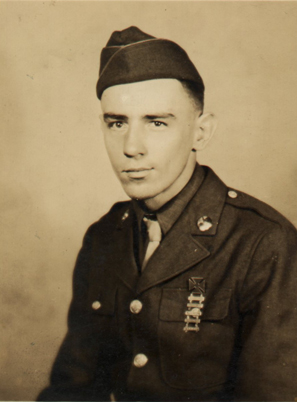
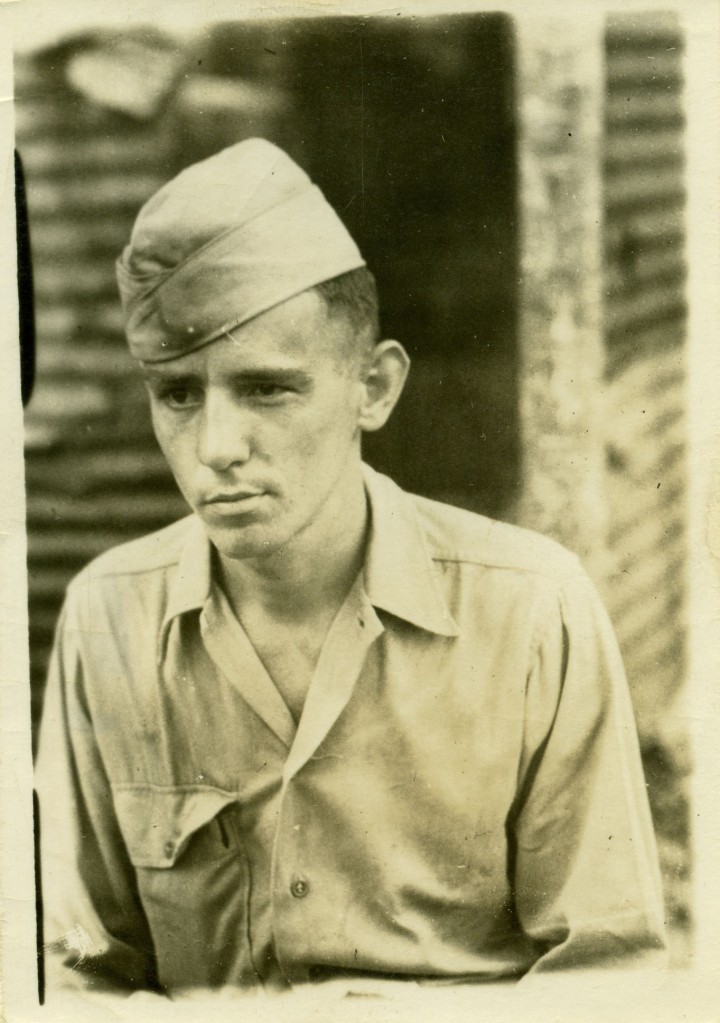
Then, I was watching the live stream from RootsTech last year had heard Jennifer Holik speak. She talked about the fact that, while individuals’ records might have been lost, they could often be reconstructed. The payroll records and unit daily reports, and many others, were still available. She said not to give up. She said that you very likely could find a lot more than you realized. She talked about exactly how to go about searching and reconstructing those records. It sounded really promising to me. (By the way, you can watch her presentation from RootsTech here.)
However, much of this work has to be done on-site in St. Louis, Missouri and then in College Park, Maryland. Maybe not the most convenient, with my crazy travel schedule.
So, I contacted Jennifer at the WWII Research and Writing Center and contracted with her. She is a professional genealogist specializing in military records. She writes, teaches, researches, and councils with people searching for records or, more importantly, the stories of those that served.
Jennifer was able to find the records that detailed exactly where my grandfather was nearly every day for his time in the Army in the Philippines. This came from the unit records, payroll records, and other sorts of records that mentioned Granddad in the St. Louis archives. Then, she combined that with the broader histories and narratives from the units that Granddad served in. This really filled out the story and the experiences that he would have faced while in the field.
The result was an awesome report! I added photos to the report, then had it, the photos, and the unit histories bound and gave a copy to Dad. He was thrilled with this. He said over and over how much Granddad would have loved to have seen it.
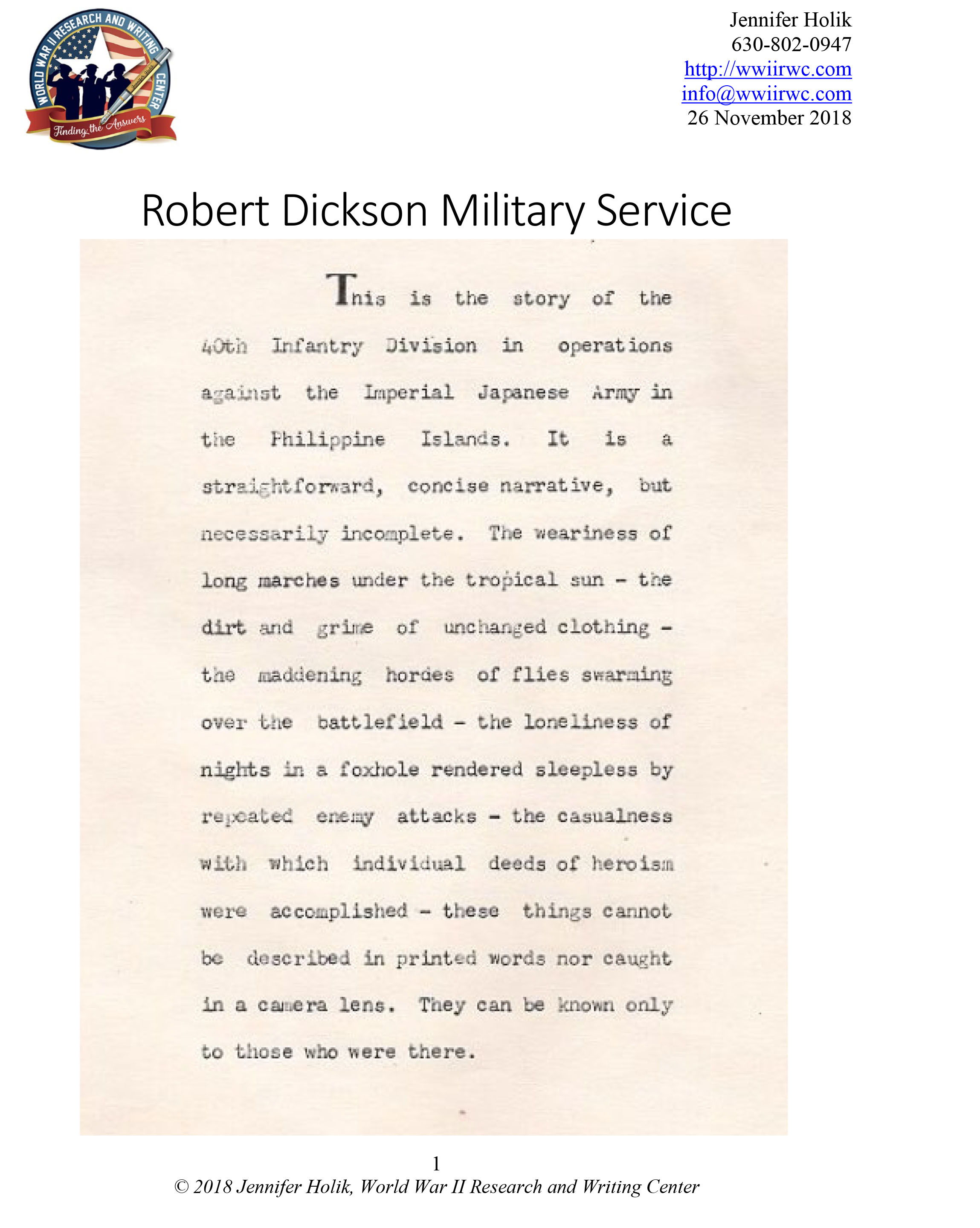
So, my recommendation: if you are curious about your ancestor’s WWII records (or records from WWI, Korea, or Vietnam) and are serious about finding more about their experience, get in touch with Jennifer. Take one of her online classes. Go to one of her talks. Contract with her as a researcher if you feel like it’s out of your depth, or like me, you can’t get to the records. She’s a great resource and writer!
You can find her at http://wwiiresearchandwritingcenter.com. Be sure to take a look.
This is the first post for a new year – 2019. I have been on the road and super busy this week, so I was all set to punt and republish a story about the first time I ever went to the library to research and my first ancestor discovery. But, starting the new year with a retread is lame, so maybe a short post about my first immigrant ancestor to this country would be in order.
While my wife, Kathleen, may have descended from a number of famous and infamous Mayflower immigrants (notably, the Billingtons), my ancestors were here to greet them when the Mayflower arrived.
Cicely Reynolds (b. 1600, England, d. about 1660, Virginia) is my first immigrant ancestor to the New World. She arrived in Jamestown in August 1611 aboard the Swan with Sir Thomas Gates. According to “The Second Boat”:
“Cecily Reynolds was born about 1600 at Waymouth, Dorsetshire, England, daughter of Thomas Reynolds and Cecily Fitzpen. Cecily arrived on August 1610 at Jamestown, VA on the ship “Swan” under the auspices of several near-relatives of Dorsetshire. She made her home with Capt. William Pierce and his wife, Joan. In 1615, in the Pierce home in Jamestown, VA, she married her first husband, Thomas Bailey. Thomas was a young Governor’s Guard and had come to Jamestown, VA in 1612. Thomas died of malaria in 1619, leaving their only child, Temperance, born 1617, which married Richard Cocke about 1632. Cecily Reynolds Bailey married (2) Samuel Jordan (of Jordan’s Journey) on 20 Sept 1620. The Jordons’ famous neighbors were, to the south, John Rolfe, who had married the young Indian Pocahontas, daughter of Chief Powhatan. After her death, Rolfe wed in 1619, Jane Pierce, daughter of Capt. William Pierce. John was killed by Indians in the 1622 “Great Massacre.” A neighbor to the north was Capt. John Woodlief who in 1619 hosted the first Thanksgiving in America at his Berkeley Plantation. Authentication to this as the first Thanksgiving – and not the one in 1621 in Plymouth Plantation – is contained in a mandate from the London Company to Capt. Woodlief, saying “We ordain the day of our ships’ arrival at the place for plantation on the land of Virginia (Berkeley Plantation) shall be yearly kept holy as a day of Thanksgiving to Almighty God.” Presidents John F. Kennedy and Lyndon B. Johnson officially recognized this event.”
“The Second Boat”, vol. 12, number 4, Sept-Oct 1991
If you have ever studied the history of Jamestown, you might recognize that Cicely arrived at a particularly bad time. The harvest of 1611 was poor and that winter was known as The Dying Time. By the next spring, the settlement was reduced to just a handful of people. Those that were still alive were considering their options for abandoning the settlement.
Connie Lapallo has written a trilogy of historical novels, or maybe you would call them fictionalized histories, of Cicely and the women and children of Jamestown. These are fascinating and really provide a view into what things might have been like during those difficult first days. She also has some well thought out and well reasoned new ideas for Cicely’s ancestry in England and how she came to Jamestown. The first book in the series, “Dark Enough to See the Stars in a Jamestown Sky” traces Cicely and her arrival and first years in Jamestown. Take a look at this and Connie’s other books in the series
Cicely is also remembered for being the source of one of the first scandalous lawsuits in Jamestown. After Cicely’s second husband, Samuel Jordan, died, Cicely had a number of suitors. Apparently, Rev. Greville Pooley felt like she had engaged herself to marry him. So, when she married William Farrar instead, he brought suit for breach of promise. The suit is well documented in the colonial records.
Cicely Reynolds is the ancestor of a large number of famous families that can claim Jamestown lineage. She is my 10th great-grandmother:
So, there you have it. I can’t even begin to imagine what it would have been like to come to Jamestown and to live through all that, not only she and the Jamestown settlers, did, but the succeeding generations. That small group of settlers, the vast majority of whom died in their first years in the New World, laid the groundwork and foundation for us today. Hopefully, we can continue to live up to their ideal.